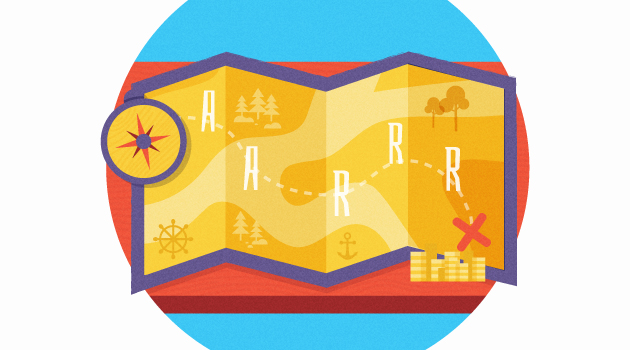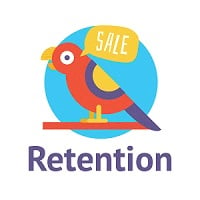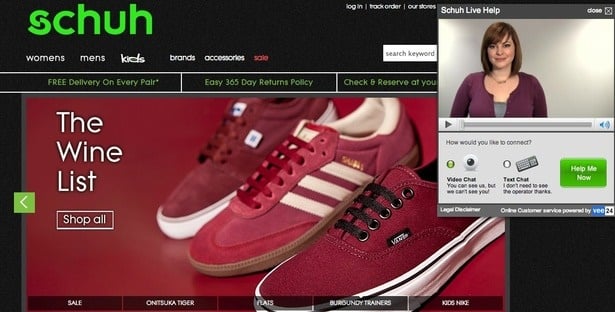
Retention: AARRR Framework Part 3
In our AARRR framework series, we explore all five steps Dave McClure outlined on the 
What is retention?
It’s your ability to keep customers coming back for repeat purchases. Although conversion is an ultimate goal in e-commerce, one-time customers are more pain than gain.
A healthy Retention rate means customers are happy with our products and service, and willingly come back for more. While it’s fairly difficult to create a love mark with a bang, customer service and experience is something you can work on.
Why is it important in the AARRR framework?
We’re going to cite just a few statistics from Econsultancy:
Acquisition of a new customer costs five times the retention of an existing one.
A 5% increase in customer retention rates boosts profit by 25% to 95%.
There’s a 60 – 70% chance of selling to an existing customer but it’s 5-20% chance of converting a new one.
While it’s natural to put efforts in attracting new customers, more often than not taking good care of your existing ones makes all the difference. In the AARRR framework, it’s the way to get from activation through to referrals and revenue.
If you’re constantly going in the vicious circle
acquisition -> one-time order -> churn
you might not be breaking even when the acquisition cost is taken into account.
On the other hand, retention means you pay for acquisition once and get repeat orders over time.
This alone earns you 25-95% more. Not only your cost goes down with each order, but it allows you to focus on making these loyal customers happy rather than chase unknown prospects and try to figure out how to convert them.
As the statistics show, if people bought from you once, it’s only a matter of good customer service and а mindful approach to keep them coming back.
We’ll focus on just a few of the tactics that boost retention rate here – they’re applicable to all types of e-commerce businesses.
Customer service
According to Kissmetrics, 71% of online shoppers have stopped buying from a company because of bad customer service. Wow! Can you imagine that none of these companies made these people feel good when shopping?
Virtual shopping assistance
We pointed this as a rising trend in commerce for 2016. Helping customers – old and new – choose from your products only makes a good impression (when done right, of course).
Sometimes, it’s hard to pick the right size, color, fit, etc. online. A non-intrusive and helpful customer service rep can do a lot for your brand via a simple live chat. This way, you’re making sure they’ll “walk out” happy with their choice, also minimizing returns and refunds.
Some statistics claim 30-40% higher sales when proactive shopping assistance is offered in online retail.

It doesn’t have to be a formal process, only someone able to answer customer questions like “How long is that dress in Medium size?” (you might have in the description, but if they ask, you answer) or “Which coffee blend is stronger?”
You’ll be surprised how many questions may arise when people cannot hold the product in their hands. Try it for some time and you’ll discover the little concerns that often put people off and they leave without buying. Then, you’ll know what to fix to ease their minds and convert easier.
Follow up a few days after delivery
Shipping is not the end of your interaction with the customer. It’s essential to check if they’re happy with what they got if you want them to order again.
Show them that you care and listen to what they say. An email, a survey form, a review request – find a format that works for you and use it. Continuously gather feedback so you know where you stand. It’s a great idea to keep track of each customer’s reviews in your ecommerce CRM. Then you’ll know how their preferences change over time.
You think they won’t respond?
Motivate them with free shipping on their next order or early-bird access to your new product. Also, focus your questions on them and their experience, not on the product. People love talking about themselves.
Why would they care to answer?
Nowadays, people want to increasingly influence the companies they buy from and participate in the whole creation process. Because they have access to information like never before, they don’t tolerate companies that don’t align with their values and are ready to speak up.
Yes, they will hold you accountable for the excessive packaging you’re using and for the ingredients in your products. Don’t expect it to change, but rather learn from their constructive criticism and do more of what makes them happy.
And don’t forget – if you want to attract more people like these, you have to listen to their suggestions and improve. That’s how you’ll reach the next step in the AARRR framework – referrals.
Customer support throughout
For good or bad, people will talk to you on social media. A recent study shows that 67% of online shoppers use social media do contact a company for support. What’s more, 42% of them expect a response within an hour or less. You’ll have to invest in quality support because that’s your brand’s face.
You need to be present where your customers want to find you. Handling problems with grace and celebrating little wins is an awesome way to stay authentic while being completely exposed to customer feedback.
How does it help retention?
Your customers will know how to reach you and feel reassured by your openness. Even if they’ve bought from you once, they need ongoing proof that you live up to expectations, continue to deliver quality and that they didn’t make a mistake spending some hard-earned money with you.
And when they request help – be it what batteries they need or whether you deliver over the holidays – answer them. Don’t undermine your own chances for another order from the same people.
Do you need examples? Check out Buffer’s article on social media customer service done right.
Rewards vs Loyalty programs
Although loyalty programs are a great way to keep retention rate up, we’d like to note how unexpected rewards turn your customer experience into a delight to look forward to.
The thing is that people enroll voluntarily in loyalty programs, bonus schemes and so on. They know what they’re signing up for. However, when you surprise them with a gift to commemorate it’s been 2 years since they became your customer, it’s unexpected and definitely uplifting.
Given the fact that you know which of your products they like, you can pick something awesome that they’ll be amazed to receive and happy to remember.
Occasions suitable for such a surprise may be:
- anniversary of first purchase (they don’t remember for sure)
- you spotted a pattern of regular purchases – for example, they buy a box of specific tea every two months (let the next one be on the house and wait for a “wow”)
- a very high-spending customer + new collection (send them a beach bag in your new colors and order is bound to follow)
- you contracted a new partnership + high-value customers (send out exclusive samples of the new products you’re about to offer)
- it’s their birthday (if you have this type of information)
Trust us, nobody said “no” to gifts, ever. Do the math – the cost of such a token of appreciation is negligible to the benefits – and go ahead.
Emails with a twist
Sure, you’re doing email marketing, but how targeted are your offers?
Since you have their order history, it’s a child’s play to decipher preferences and act on them. Even your email offers should reflect your respect and care for your customers’ tastes.
If they always buy decaf coffee, why are you trying to cross-sell regular blends? And if they obviously wear flattering and medium-length dresses, why are you pushing these tight-fitting, body-con dresses?
They’ve been satisfied with your products so far, but that doesn’t mean you can’t go wrong and piss them off.
Instead, offer them items close to their past choices or – as you read above – learn from their feedback and present them a new product that can better fit their needs.
For example, if they indicated the body lotion feels too heavy to their skin, suggest they tried something a little lighter this time – scoring two points for relevancy and active listening to feedback. They will notice.
In the end, a high retention rate means you get to enjoy a stable customer base who apparently like your products. In today’s oversaturation with options, the fact that they keep coming back to you means a lot. You’ve found your ideal target audience and your products continue to make them happy.
So don’t:
- change quality or pricing without surveying their opinion;
- cut or expand assortment without sound research on how it’ll be accepted;
- lose your personal touch as you grow.
What to do then:
- ask their opinion;
- don’t assume they won’t notice;
- invest in all tools necessary to continue providing the service, products, and experience that loyal base was built on.
In case you need more ideas how to retain customers, see what tips the Paymill and the 2015 Ecommerce Toronto Meetup came up with.
When you think about retention in terms of the AARRR framework, you see that it’s the only logical stepping stone to referrals and sustainable flow of revenue.
Build and grow your ecommerce brand
Metrilo’s mission is to help you build your ecommerce brand and win your place in the customer’s heart. We share what we learn from our daily work with product innovators and founders here. Subscribe to our weekly newsletter to get the freshest lessons and conquer your niche.
We promise, no spam.
Thank you for subscribing!
See you soon :-)



